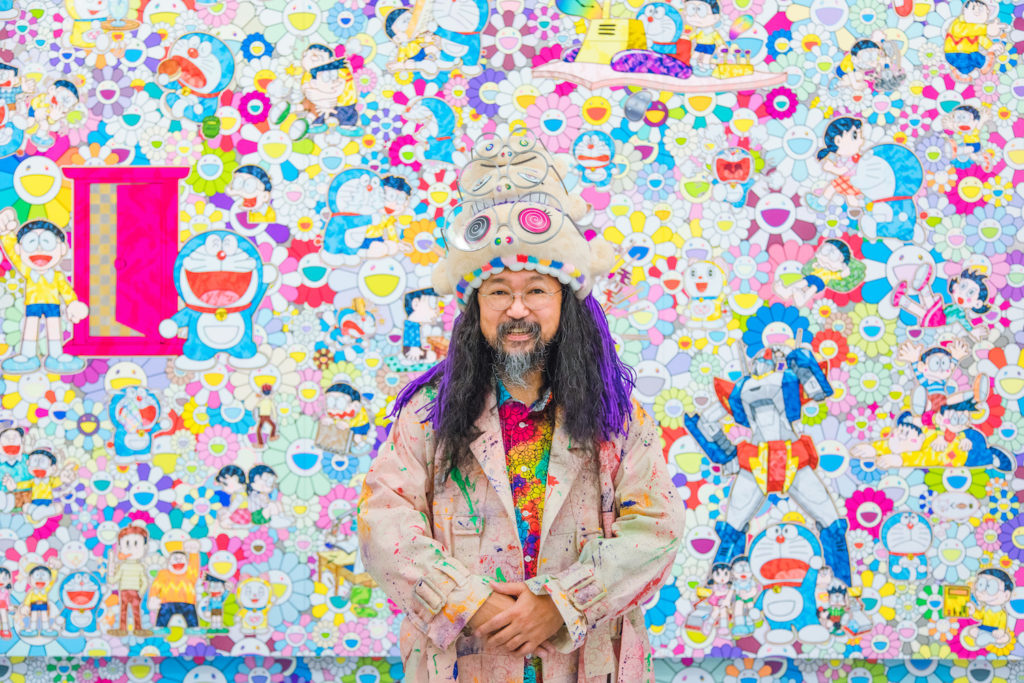.jpg)
All About Artists
Art and The Now: How Art Has Reacted to Global Trends
Discover some of our artists whose dynamic works explore themes relating to significant global trends
By Sarah
While art has had a number of functions throughout history, it is often reactionary, reflecting or reacting to developments that occur in the world. These include social, political and environmental developments, and are presented in a myriad of different forms. The engaging nature of art has made it an excellent medium for artists to communicate ideas and issues to viewers, in the hopes of generating discussion and eventually, change.
COVID-19 Pandemic
With audiences isolating at home and venues shuttered, the arts industry, which mainly operates in open and shared spaces, has to reinvent itself. Luckily, many artists have responded to this challenge with the ingenuity you expect from highly creative minds.
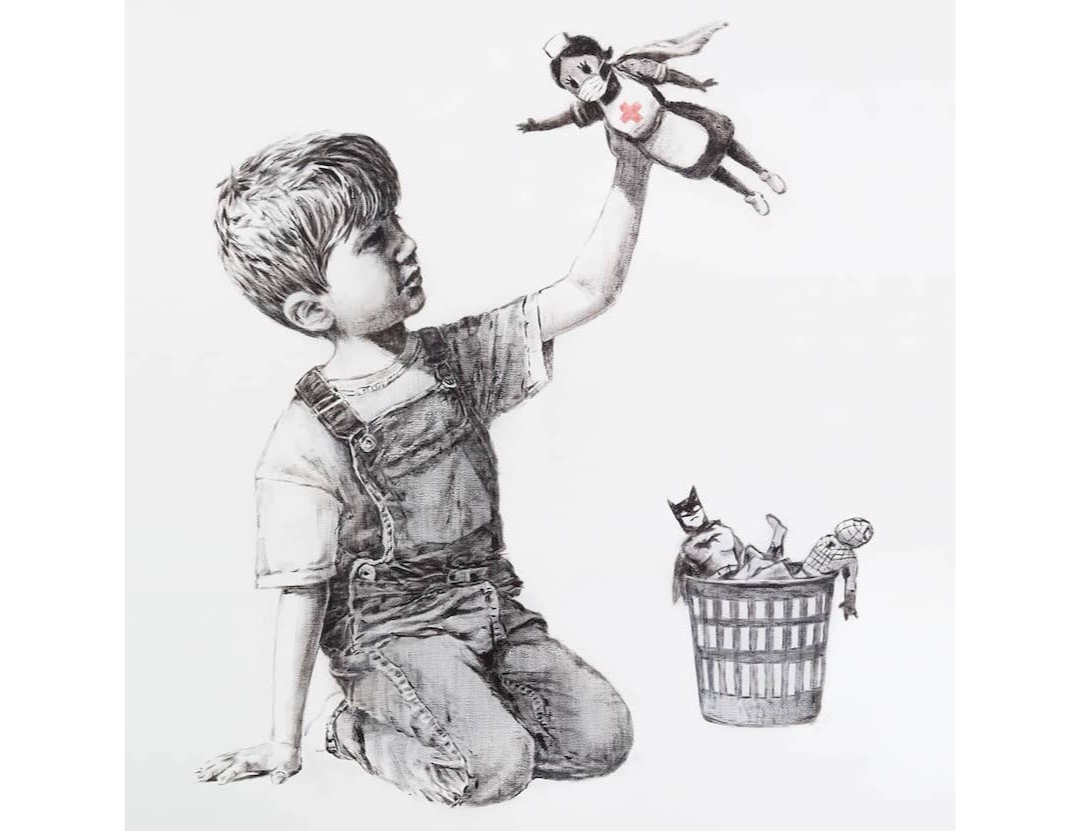
Painting for the Saints by Banksy
In a world upended by the global pandemic, some artists see art as a way to make sense of this shared experience, as well as a source of comfort and connection.
Street artist Banksy chose to pay tribute to health workers, the "first liners" who were fighting the pandemic, and were widely celebrated as heroes. In this work, painted on the side of the Southampton General Hospital, a young boy seems to have discarded his traditional action figures and now plays with a medical professional wearing a cape and in the classic "Superman" pose. The heartwarming tribute aims to redefine the notion of (super)hero and the contemporary definition of a saint, while also asking us to re-think who our role models should be.
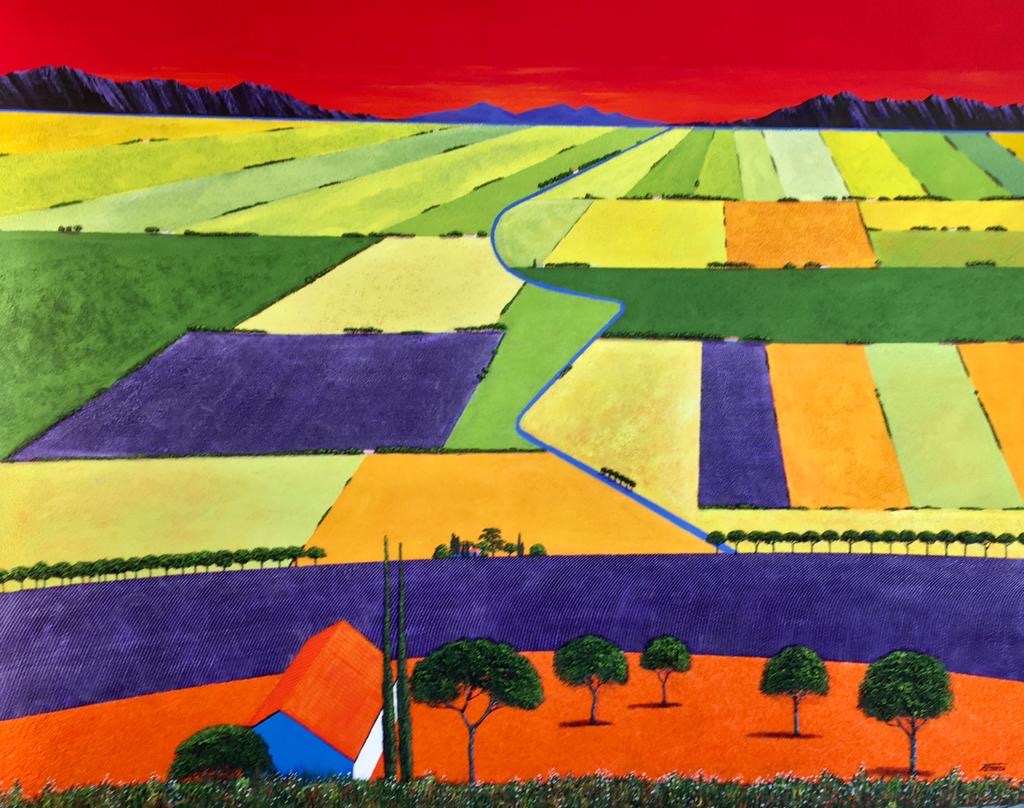
Across the Valley by Ronnie Ford
Scottish artist Ronnie Ford is also isolating, and chose to focus on painting the warm landscapes he remembers from his travels in Southern France. Inviting viewers to pause, take a break and travel to peaceful landscapes is a way to offer an escape and to momentarily forget the daily stress induced by the pandemic and all its consequences.
A famous example of Political Art is Guernica by Pablo Picasso. Created in 1937, the monumental painting was a protest against the Nazi bombing of a small Basque town ordered by Spanish dictator Francisco Franco. It depicts a frenzied tangle of six human figures, a horse, and a bull. Guernica is a pictorial condemnation of a cold-blooded, faceless massacre of innocent people, and is a timeless piece whose frighting message is still understood by people all over the world regardless of national, geographical or religious factors.
Wu Qiong

Tian An Men Square by Wu Qiong
Wu Qiong’s Marching Forth series is an excellent example of contemporary political art. This series portrays three groups of characters with similar expressions and behavior, whose differing attire enables us to categorize them into different eras: the Republican period, the Cultural Revolution period and the 1980s. There is a Chinese expression stating children were educated for “various ancestors,” and later it was also for the purpose of “social benefits” and “prosperity of the nation.” As such, Wu Qiong delivers a nuanced critique of China’s ruling forces, in which he illustrates how children -and adults- in the country have lost their individuality and simply exist as members of a collective that are “marching forth in unison” with those around them, in order to fulfil political requirements of the state.
The End of The Twentieth Century by German artist Joseph Beuys consists of large, oblong pieces of basalt, all of which have a conical hole bored into them at one end. In these holes smaller cones of rock have been placed, lined with clay and felt. The rocks evoke bones or corpses, and in their random alignment could produce the sensation in a viewer that "the state of the world is beyond control". The installation was borne from Beuys' environmental concerns, and demonstrates how artists explored and discussed this thematic concern through their work.
Dae Byu
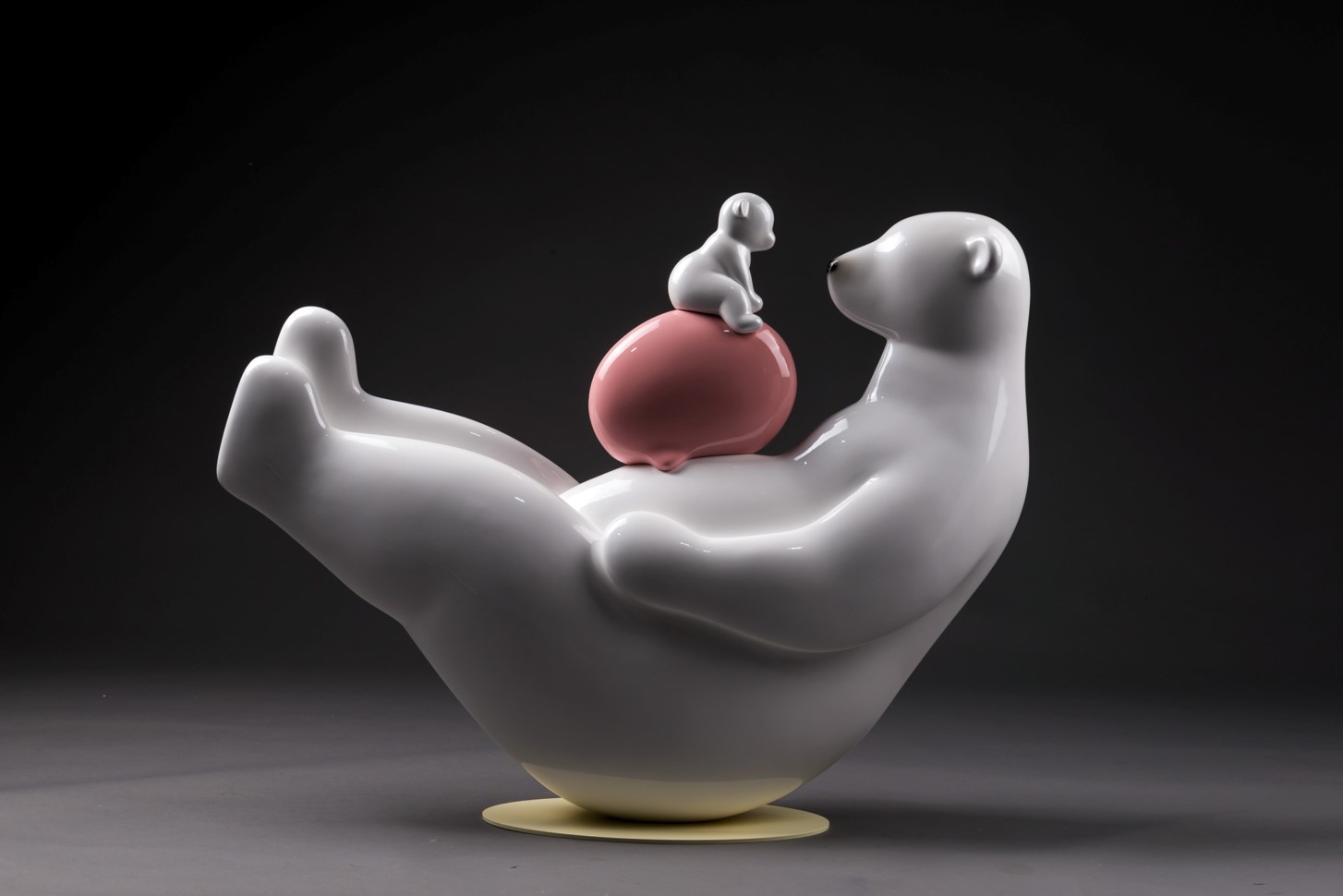
Ice Cream and Polar Bear by Dae Byu
Dae Byu is one of such artists whose works aim to bring attention to environmental changes in the world. His whimsical sculptures often depict a family of polar bears, who interact with each other as well as pastel coloured scoops of ice cream. Byu’s works feature expressive visual language and his signature animal-human motif, in which he anthropomorphizes his subject matter, depicting the creatures interacting in ways that are seemingly humane in nature. Byu's "fables" bring issues that have been ignored or considered secondary into the foreground, shining light on the impact man’s actions have had on innocent animals, and reminding us to take care of every aspect of our planet.
Deng Cheng Wen
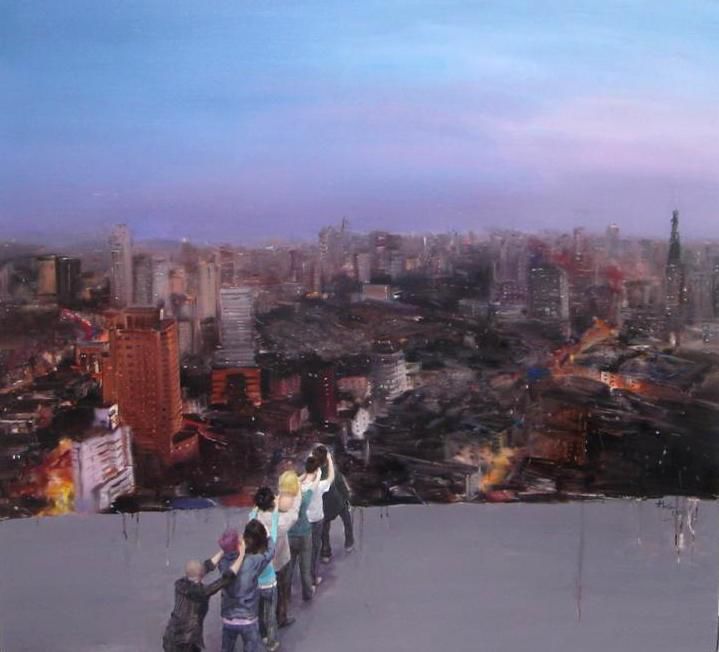
Blind Walking Series by Deng Cheng Wen
An example of socially-focused art is that of Chinese artist Deng Cheng Wen. His ‘Blind Walking’ series captures the collective ambition, ignorance and emotional flurry within the young Chinese of his generation. He believes that the young Chinese are seemingly drawn to an unknown and dangerous path, and while blindfolded by each other, they never attempt to pry the hand that covers their eyes away. Deng repeatedly points to their ignorance, yet has no intention of removing their hands of their eyes, nor does he intend to bring them away from these dangerous settings, because he is aware that this cannot be changed unless the blind walker himself is willing to change.
For an emerging artist, Deng's insight into issues unique to his generation is admirable. Despite his youth, his message is compelling and pertinent, whilst his arresting compositions attest to his immaculate attention to detail.
Y Indra Wahyu
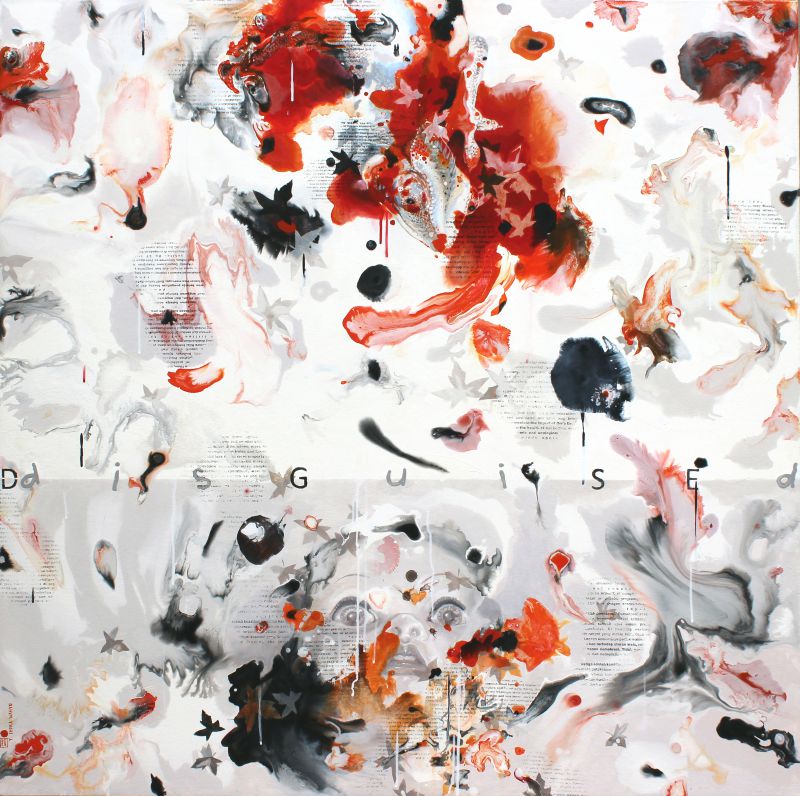
Camouflage 2 by Y Indra Wahyu
Y Indra Wahyu is another artist whose works have a social focus, particularly that of the pressures of modern life on youth. The artist’s work, Camouflage 2, uses images of textbook pages to symbolize the unbearable pressure of studying that has plagued children of today. He displays the child as hidden behind the pages, almost as if he is drowned in them. Camouflage in this context thus implies the disappearance of a child in his personality, dreams, and desires- as a whole, being hidden away under the cascading pressures set on them by today's unbending world.
Vani

Unity 13 by Vani
An artist whose works have a social focus and simultaneous uplifting aim is Indonesian artist Vani Hidayatur Rahman. Vani’s works often feature miniature figures in a myriad of vibrant colours, who despite their difference in appearance, are depicted as working together to achieve a single goal. Through his art, he illustrates how despite cultural differences or differences in background, we can come together as a collective society to create significant change in the world.
COVID-19 Pandemic
With audiences isolating at home and venues shuttered, the arts industry, which mainly operates in open and shared spaces, has to reinvent itself. Luckily, many artists have responded to this challenge with the ingenuity you expect from highly creative minds.

Painting for the Saints by Banksy
In a world upended by the global pandemic, some artists see art as a way to make sense of this shared experience, as well as a source of comfort and connection.
Street artist Banksy chose to pay tribute to health workers, the "first liners" who were fighting the pandemic, and were widely celebrated as heroes. In this work, painted on the side of the Southampton General Hospital, a young boy seems to have discarded his traditional action figures and now plays with a medical professional wearing a cape and in the classic "Superman" pose. The heartwarming tribute aims to redefine the notion of (super)hero and the contemporary definition of a saint, while also asking us to re-think who our role models should be.

Across the Valley by Ronnie Ford
Scottish artist Ronnie Ford is also isolating, and chose to focus on painting the warm landscapes he remembers from his travels in Southern France. Inviting viewers to pause, take a break and travel to peaceful landscapes is a way to offer an escape and to momentarily forget the daily stress induced by the pandemic and all its consequences.
Political Art
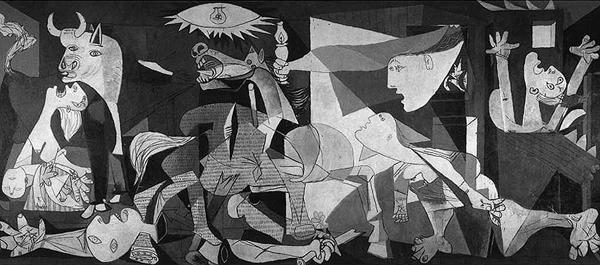
Guernica by Pablo Picasso
One of the key aims of early twentieth-century art has been to use visual images to bring about political change. Art movements that had this goal included Dadaism, Surrealism, and Futurism, avant-garde movements which intended to undermine established values. This purpose of art continues today for many artists, aimed at exposing flaws of the ruling class, including government, the wealthy, and corporations. 
Guernica by Pablo Picasso
A famous example of Political Art is Guernica by Pablo Picasso. Created in 1937, the monumental painting was a protest against the Nazi bombing of a small Basque town ordered by Spanish dictator Francisco Franco. It depicts a frenzied tangle of six human figures, a horse, and a bull. Guernica is a pictorial condemnation of a cold-blooded, faceless massacre of innocent people, and is a timeless piece whose frighting message is still understood by people all over the world regardless of national, geographical or religious factors.
Wu Qiong

Tian An Men Square by Wu Qiong
Wu Qiong’s Marching Forth series is an excellent example of contemporary political art. This series portrays three groups of characters with similar expressions and behavior, whose differing attire enables us to categorize them into different eras: the Republican period, the Cultural Revolution period and the 1980s. There is a Chinese expression stating children were educated for “various ancestors,” and later it was also for the purpose of “social benefits” and “prosperity of the nation.” As such, Wu Qiong delivers a nuanced critique of China’s ruling forces, in which he illustrates how children -and adults- in the country have lost their individuality and simply exist as members of a collective that are “marching forth in unison” with those around them, in order to fulfil political requirements of the state.
Environmental Art
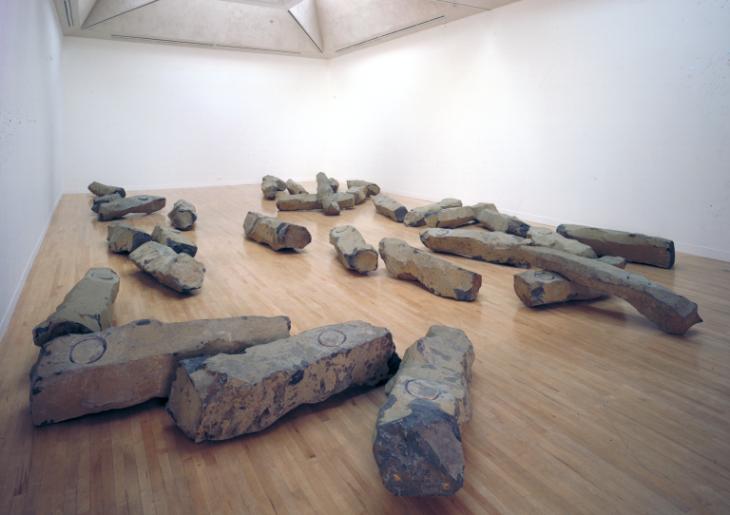
The End of The Twentieth Century by Joseph Beuys
Environmental Art is a broad term including a number of different practices and movements, such as Land Art, Sustainable Art and Conceptual Art. With global warming becoming an increasingly pressing issue in our current world, artists are increasingly using their practice to address this development and to shine a light on the changes occurring as a result of climate change. Environmental art is concerned with environmental forces and materials; it re-envisions humans’ relations with nature and remediates damaged environments.
The End of The Twentieth Century by Joseph Beuys
The End of The Twentieth Century by German artist Joseph Beuys consists of large, oblong pieces of basalt, all of which have a conical hole bored into them at one end. In these holes smaller cones of rock have been placed, lined with clay and felt. The rocks evoke bones or corpses, and in their random alignment could produce the sensation in a viewer that "the state of the world is beyond control". The installation was borne from Beuys' environmental concerns, and demonstrates how artists explored and discussed this thematic concern through their work.
Dae Byu

Ice Cream and Polar Bear by Dae Byu
Dae Byu is one of such artists whose works aim to bring attention to environmental changes in the world. His whimsical sculptures often depict a family of polar bears, who interact with each other as well as pastel coloured scoops of ice cream. Byu’s works feature expressive visual language and his signature animal-human motif, in which he anthropomorphizes his subject matter, depicting the creatures interacting in ways that are seemingly humane in nature. Byu's "fables" bring issues that have been ignored or considered secondary into the foreground, shining light on the impact man’s actions have had on innocent animals, and reminding us to take care of every aspect of our planet.
Socially-focused Art
 The Problem We All Live With by Norman Rockwell
The Problem We All Live With by Norman Rockwell
As art is often influenced by the surrounding world, one of the key themes that is explored by artists relates to society, and developments that have occurred in this area. This could include developments such as ideological changes in society, as well as behaviour changes observed. Depending on the culture or scope that influences artists, socially-focused art can take a number of different forms. However, its core focus remains people, and thus through this form of art, artists often attempt to delve into the psyche of their fellow co-inhabitants of the world.
Norman Rockwell's iconic painting, The Problem We All Live With depicted six-year-old Ruby Bridges being escorted by US marshals to her first day at an all-white school in New Orleans. The painting, which depicts derogatory insults written on a wall and thrown tomatoes on the ground, was a raw and affecting depiction of the hostilities towards African Americans in America during the years of racial segregation, and even in the immediate years following desegregation.
 The Problem We All Live With by Norman Rockwell
The Problem We All Live With by Norman Rockwell As art is often influenced by the surrounding world, one of the key themes that is explored by artists relates to society, and developments that have occurred in this area. This could include developments such as ideological changes in society, as well as behaviour changes observed. Depending on the culture or scope that influences artists, socially-focused art can take a number of different forms. However, its core focus remains people, and thus through this form of art, artists often attempt to delve into the psyche of their fellow co-inhabitants of the world.
Norman Rockwell's iconic painting, The Problem We All Live With depicted six-year-old Ruby Bridges being escorted by US marshals to her first day at an all-white school in New Orleans. The painting, which depicts derogatory insults written on a wall and thrown tomatoes on the ground, was a raw and affecting depiction of the hostilities towards African Americans in America during the years of racial segregation, and even in the immediate years following desegregation.
Deng Cheng Wen

Blind Walking Series by Deng Cheng Wen
An example of socially-focused art is that of Chinese artist Deng Cheng Wen. His ‘Blind Walking’ series captures the collective ambition, ignorance and emotional flurry within the young Chinese of his generation. He believes that the young Chinese are seemingly drawn to an unknown and dangerous path, and while blindfolded by each other, they never attempt to pry the hand that covers their eyes away. Deng repeatedly points to their ignorance, yet has no intention of removing their hands of their eyes, nor does he intend to bring them away from these dangerous settings, because he is aware that this cannot be changed unless the blind walker himself is willing to change.
For an emerging artist, Deng's insight into issues unique to his generation is admirable. Despite his youth, his message is compelling and pertinent, whilst his arresting compositions attest to his immaculate attention to detail.
Y Indra Wahyu

Camouflage 2 by Y Indra Wahyu
Y Indra Wahyu is another artist whose works have a social focus, particularly that of the pressures of modern life on youth. The artist’s work, Camouflage 2, uses images of textbook pages to symbolize the unbearable pressure of studying that has plagued children of today. He displays the child as hidden behind the pages, almost as if he is drowned in them. Camouflage in this context thus implies the disappearance of a child in his personality, dreams, and desires- as a whole, being hidden away under the cascading pressures set on them by today's unbending world.
Vani

Unity 13 by Vani
An artist whose works have a social focus and simultaneous uplifting aim is Indonesian artist Vani Hidayatur Rahman. Vani’s works often feature miniature figures in a myriad of vibrant colours, who despite their difference in appearance, are depicted as working together to achieve a single goal. Through his art, he illustrates how despite cultural differences or differences in background, we can come together as a collective society to create significant change in the world.


.jpg)
